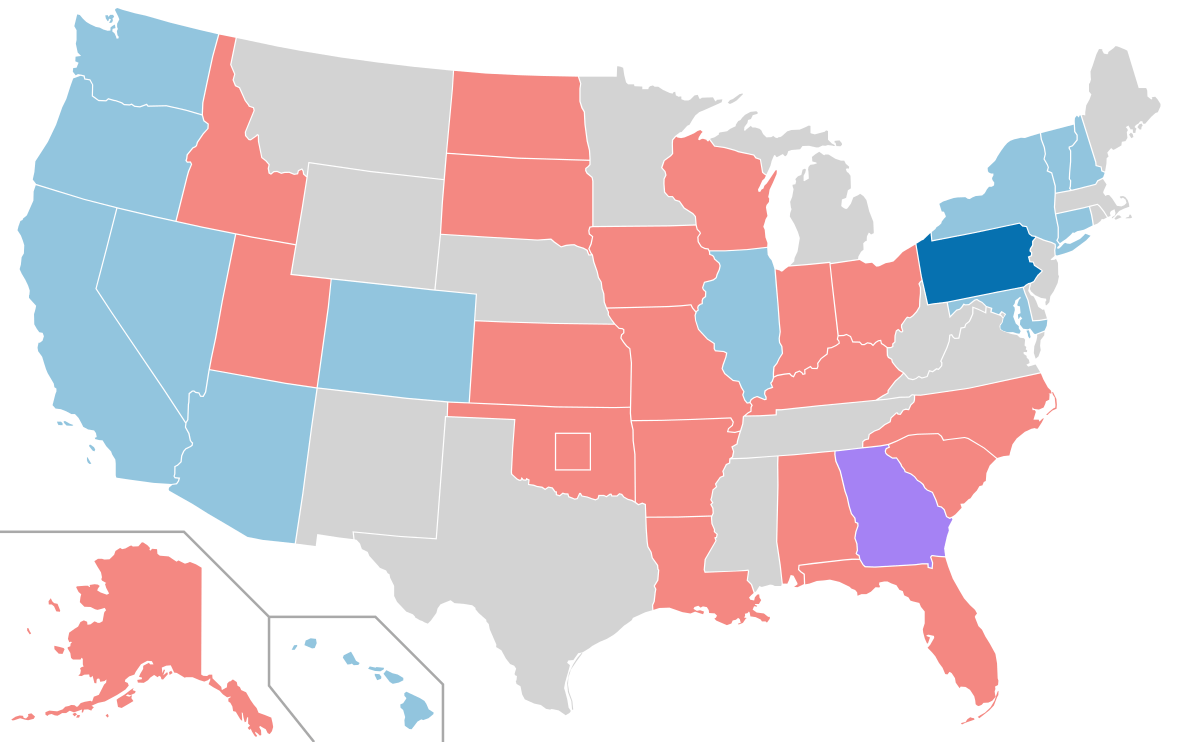by Liam Dunne '26 on November 27, 2022
News Co-Editor
Featured Slider

In early November, Democrats were projected as likely to lose the majority in both the House of Representatives and the Senate; polling and analyst opinion predicted a “red wave” in the midterm elections. As results continue to roll in, Democrats have clinched the Senate majority, holding 50 seats plus the tie-breaking vote of Vice President Kamala Harris, while the race for control of the House remains neck and neck. Progressives have defied popular expectations in this election, revealing the attitudes of America’s voter demographic.
Why exactly were these results so skewed from polling expectations? An unprecedented turnout among young voters is one answer. Some analysts say that this election had the second-highest young voter turnout in the past 30 years. In recent elections, young voters have been largely left-leaning; in this election, 63 percent of voters between the ages of 20-29 voted Democrat in the race for the House while 35 percent voted Republican. In key battleground states such as Pennsylvania, young voters resoundingly showed up for progressive candidates. 70 percent of voters aged 20-29 cast their ballots for the Democratic candidate John Fetterman in the Pennsylvanian senatorial race. Pennsylvania was the only Senate seat to flip in this midterm election, helping Democrats to clinch the Senate majority.
A number of topical issues appeared on state-level ballots this election, with proposed revisions concerning abortion, criminal, and worker rights. Abortion rights were added to local constitutions in California, Michigan, and Vermont, while bans were rejected in both Kentucky and Montana. A dynamic has become apparent in predominantly conservative states regarding abortion bans: in the wake of Roe v. Wade being overturned, many Republican voters are fighting to preserve reproductive rights despite the resounding interests of their representatives. For example, in Michigan, the majority of right-leaning districts in the gubernatorial race voted to preserve abortion rights.
In several states, the issue of slavery was put to a vote. Voters in Alabama, Vermont, Tennessee, and Oregon repealed forced servitude as punishment for a crime from their state constitutions, closing a loophole enshrined within the 13th Amendment that forces convicts into slave labor as part of their sentence. Louisiana voted to keep this loophole within its state constitution. Workers’ rights have been established in several states: Nebraska and Washington, D.C. voters secured minimum wage increases while Illinois enshrined collective bargaining rights into its constitution, guaranteeing union rights for its labor force. Locally, the state of Rhode Island chose Democrats across the board. Secretary of State, both House seats, Governor, Lieutenant Governor, and Attorney General all went to Democratic candidates. Regardless of political affiliation, progressive policies were popular in many states in this election.
With progressive policy on the rise among many voting demographics and a resoundingly liberal young voter generation, many Americans wonder what is keeping Democrats from additionally securing the House of Representatives. Some political experts believe the answer lies in voter suppression. In February, the Supreme Court voted 5-4 to suspend a ban on racial gerrymandering for the 2022 midterm elections. While the race for the Senate is decided by state-wide popular vote, House representatives are decided by district. Racial gerrymandering is the process of drawing district lines that pour minorities (an overwhelmingly left-leaning voter demographic) into a singular district, thus ensuring that they have less representation. Georgia exemplifies this dynamic—although the state voted for Raphael Warnock, a Democrat, in the senatorial race, only five of their 14 congressional seats went to Democrats in the race for the House. Democrats do still have a chance of retaining their congressional majority; voters nationwide have demonstrated approval of a more Democratic government. This election depicted a largely left-leaning young voter demographic and significant support for Democratic policy.